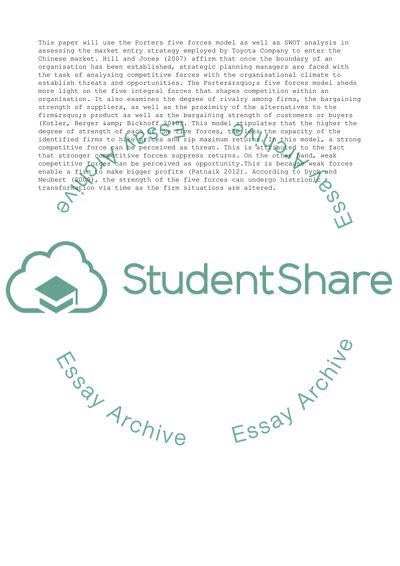Cite this document
(“Toyota Company in China Case Study Example | Topics and Well Written Essays - 4750 words”, n.d.)
Toyota Company in China Case Study Example | Topics and Well Written Essays - 4750 words. Retrieved from https://studentshare.org/business/1621550-toyota-company-in-china
Toyota Company in China Case Study Example | Topics and Well Written Essays - 4750 words. Retrieved from https://studentshare.org/business/1621550-toyota-company-in-china
(Toyota Company in China Case Study Example | Topics and Well Written Essays - 4750 Words)
Toyota Company in China Case Study Example | Topics and Well Written Essays - 4750 Words. https://studentshare.org/business/1621550-toyota-company-in-china.
Toyota Company in China Case Study Example | Topics and Well Written Essays - 4750 Words. https://studentshare.org/business/1621550-toyota-company-in-china.
“Toyota Company in China Case Study Example | Topics and Well Written Essays - 4750 Words”, n.d. https://studentshare.org/business/1621550-toyota-company-in-china.


